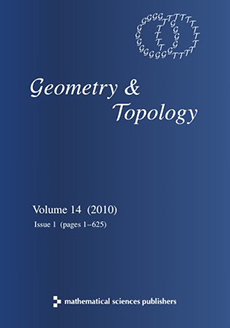Abstract
In part I of this work we studied the spaces of real algebraic cycles on a complex projective space , where carries a real structure, and completely determined their homotopy type. We also extended some functors in –theory to algebraic cycles, establishing a direct relationship to characteristic classes for the classical groups, specially Stiefel–Whitney classes. In this sequel, we establish corresponding results in the case where has a quaternionic structure. The determination of the homotopy type of quaternionic algebraic cycles is more involved than in the real case, but has a similarly simple description. The stabilized space of quaternionic algebraic cycles admits a nontrivial infinite loop space structure yielding, in particular, a delooping of the total Pontrjagin class map. This stabilized space is directly related to an extended notion of quaternionic spaces and bundles (–theory), in analogy with Atiyah’s real spaces and –theory, and the characteristic classes that we introduce for these objects are nontrivial. The paper ends with various examples and applications.
Citation
H Blaine Lawson. Paulo Lima-Filho. Marie-Louise Michelsohn. "Algebraic cycles and the classical groups II: Quaternionic cycles." Geom. Topol. 9 (3) 1187 - 1220, 2005. https://doi.org/10.2140/gt.2005.9.1187
Information





